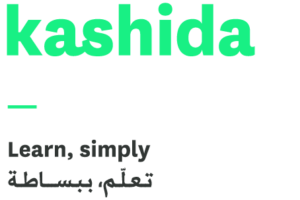
5 Factors For Learning Designers To Consider
In this age of globalization and digitization, it is only natural that many eLearning programs are translated into different languages and implemented in different countries. After all, one of the main advantages of eLearning is that it allows for global reach—to anyone, anywhere, with a smartphone and internet connection. But reach does not necessarily result in engagement. Just as the success of a product or service being sold internationally often depends on the level to which it “speaks” to the local markets, the engagement with an eLearning program is sometimes impacted by the degree to which it is adapted to the languages and cultures where it is implemented. On the surface it may appear that this adaptation requires the simple act of translating the learning content to the relevant local language—a task for language experts. A closer look reveals that adapting a learning program to different contexts is, in fact, at the core of learning design.
Below are 5 factors for learning designers to consider, along with examples from two of the projects we have worked on: AHEL’s Media Objects on Community Organizing for a Jordanian audience and the Rowad Nomou course for entrepreneurs in Saudi Arabia.
How To Implement Contextualization To Localize Your eLearning Content
1. Meaningful Translation
While translation of the content remains an essentially linguistic task, direct translation can easily miss the meaning and disrupt the smooth flow needed for an effective learning experience. The learning designer needs to work with the translator to ensure that expressions and text syntax is natural and reflective of cultural nuances. This allows learners to engage with the content in a more personal and familiar manner, paving the way for easier and more natural mental assimilation of knowledge.
For example, in the Media Objects on Community Organizing, we worked alongside the Jordanian Subject Matter Experts to formulate scenario dialogues that reflect the natural conversation style of Jordanians.
2. Local Tone Of Voice, Literally
The written word is on one side of the coin, the spoken word is on the other. Voice-over is often used to narrate the content of eLearning programs with the aim of making them more engaging and accessible. However, voice-over can become disruptive to attention when the tone of voice, accent, and/or dialect used is not reflective of learners’ natural speech. The learning designer can work with local copy editors and voice-over talents to capture the most appropriate tone, accent, and dialect for their local audiences.
For example, in the Rowad Nomou course, we worked with voice-over talents from Saudi Arabia who presented the narration in an informal, yet professional dialect.
3. Context-Specific Examples And Content
While the content may be established by Subject Matter Experts from a particular part of the world, certain elements of the content may be irrelevant to, non-reflective of, and/or non-transferable to local contexts. This can be especially true when presenting statistics, legislations, local instruments, use cases and patterns of behavior, etc. If it’s not feasible to incorporate local data on such matters within the core of the learning program and to avoid outdating without periodic updates, then pointing learners to local sources of such data can be useful.
For example, in the Rowad Nomou course, we included Saudi-specific statistics related to entrepreneurship and included links and references to local institutions that support entrepreneurship.
4. Local Experts
Related to the point above, another way to localize content is for the learning designer to invite guests from the country to which the course is adapted to participate in various capacities: to share personal experiences, facilitate webinars, provide case studies, moderate discussion forums, etc. This supplements the main content by bringing in relatable, local perspectives that can address the unique questions and concerns that learners from that country might have. Local guests can also help inspire learners through local success stories and point to local opportunities and advantages.
For example, in the Rowad Nomou course, we produced short TED-talks-style videos in which experts and successful entrepreneurs from the Saudi ecosystem shared lessons learned and insights from their personal journeys. These videos were used as introductory units to each module.
5. Culturally Adapted Characters And Avatars
Not only should the content of the learning program be adapted to the culture and context, but also the visual design elements. This is especially true for the design of characters and avatars—this includes considerations for dress codes, skin tones, hair colors and styles, cultural props, etc. The learning designer can incorporate a diversity of characters within the original course so that no adaptation is needed for different contexts. When learners feel represented in this way, they are less likely to see the learning program as “foreign and therefore does not apply to me.”
For example, in the Media Objects on Community Organizing, we designed the characters in line with the Jordanian culture and reflecting the diversity within the population.
At Kashida, as part of our discovery process at the beginning of program design, we aim to understand whether our client envisions only a local or also an international audience for the program and whether multiple languages will be needed. Sometimes, a program is intended to start off with a local audience and a single language, with the potential for expanding geographical reach and incorporating additional languages in the future. Knowing about such plans—even if they are only tentative—from the beginning allows us to design a more future-proof learning journey that can be more readily adapted to different contexts if and when needed.
